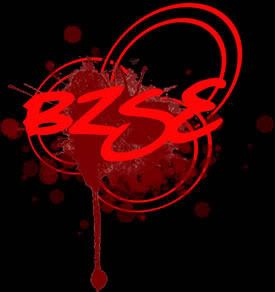Sunday, November 8, 2009
. Jonathan T01 - DID Singapore, somewhere you wanna go
3:37 PM
When entering the exhibition, I thought to myself, “well… how dark can it be?” and confidently I stepped into the exhibition, but just after three to four steps into the exhibition, I started grabbing onto my friend who was in front of me and kept on asking whether if the one behind me was still there. I felt helpless, because for the very first time, there is no difference from having your eyes close or open. This is the first time in my life my eyes can’t lead me in the direction that I should be going. Instead all I had was a walking stick and the voice of the guide. After being introduced to our guide Helemy, He welcomed us and after which he asked us to explore our surrounding for ourselves. I did not really dare to leave my group of friends and explore, instead I held onto the one who is in front of me and followed him wherever he went. I was afraid that I will be lost in the dark and I will never be able to find my way out. But after much encouragement from Helemy, telling us if ever we are lost, we just got to walk towards his voice, I took up the courage to just wander off. Using the walking stick to feel what in front of me and whenever one of our group mates found something, our guide will always say “call out to the others so that they know where you are.”, and the rest of us will move towards his/her voice. Before going for the tour, I didn’t expect much from the tour. I felt that it was just walking in the dark, never did I expect the tour to be “that dark” so much so that I needed to depend on the guide’s voice and not my sight.
I think one of the greatest take away for me is to have a conversation with the guide in the dark. HE introduced himself and shared about his life and we found out that he was not born blind but was blind because of some tumor in the brain and all. I asked him, how was it like when he knew that he is going to be blind and how did he feel when he woke up that very day in the hospital without your sigh. He told us he was prepared and quite positive about things. He carried on by saying, it is to find something positive in the negative. That really caught me, I thought to myself, if I became blind I think I will feel all helpless and probably I will fall into depression. Just minutes in the tour and I was feeling all helpless and scared made me realize how much I depended on my sight and through the tour experience I then realize how much dependency we have put in our sight, without it we feel scared and helpless, imagine those who become blind permanently, it must have took them a lot of courage to carry on living. Not being able to see a single thing, going through landmarks of Singapore in the exhibition, it seemed so fascinating, touching the tree, touching the statue of Stanford Raffles, touching a car, fruits and many other things. It felt so different touching those things and feeling them without our vision. This made me realize that our sight is something that is given and somehow we took for granted of this gift given to us and think that it is something which we deserve, while others need to live everyday without it and continue to live as if one has sight.
I think DID Singapore is like a platform, a benchmark for BZSE and PCS students. To set a certain standard for the students, that in the future this is something the students can do and do it better. It is a statement to BZSE students especially that, a successful social enterprise is do-able and possible in Singapore. One of the ways which BZSE students can contribute to DID Singapore is through publicizing it to our friends and family members, encouraging them to come and experience the tour and remind them of the blind community in Singapore.
Jonathan Lau, T01
------

